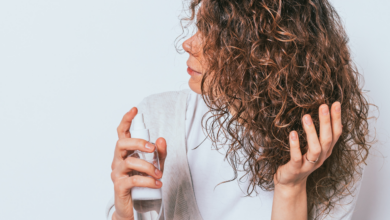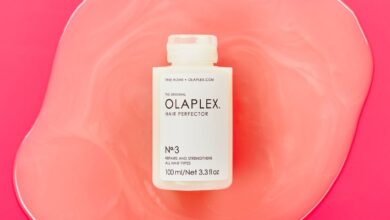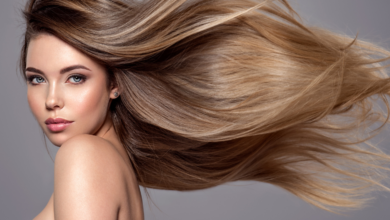
In “Color Corrections: How To Fix Hair Dye Disasters At Home,” you will discover useful tips and tricks to rectify those unexpected hair dye mishaps from the comfort of your own home. Whether you’ve ended up with an overly vibrant shade, uneven coloring, or even a color that’s just not what you had in mind, this article will guide you through the process of correcting these common hair dye mistakes. Don’t worry, with a little knowledge and patience, you can easily transform your hair from disaster to fabulous without stepping foot in a salon.

Reasons for Hair Dye Disasters
Inaccurate Color Selection
One of the main reasons for hair dye disasters is an inaccurate color selection. It is crucial to choose a hair dye shade that complements your skin tone and matches your desired outcome. Failure to do so can result in a drastic change that may not suit you or the look you were going for. It’s important to consider factors such as your natural hair color, eye color, and undertones when selecting a new shade.
Incorrect Application Techniques
Another common reason for hair dye disasters is using incorrect application techniques. Applying hair dye incorrectly can lead to streaky or patchy color, uneven distribution, and unsightly results. It is essential to follow the instructions provided with the hair dye and ensure that you apply it evenly from root to tip. Additionally, using the right tools, such as a tint brush or applicator bottle, can make a significant difference in achieving a professional-looking result.
Overlapping of Previous Dye
Overlapping of previous dye is another factor that can contribute to hair dye disasters. If you are not careful when applying a new color, it can overlap with the already dyed hair, resulting in uneven color and potential damage. Proper sectioning of the hair and precise application is crucial to avoid overlapping and achieve an even and seamless color distribution.
Uneven Color Distribution
Uneven color distribution is a common issue that can occur during the dyeing process. This can happen when the dye is not applied evenly to all sections of the hair or if the dye is not left on for the recommended amount of time. It is essential to take your time when applying the dye and ensure that it is evenly distributed from roots to ends. Additionally, make sure to follow the recommended processing time to avoid any patchy or uneven color results.
Evaluating the Damage
Assessing the Overall Color
Before diving into correcting a hair dye disaster, it is crucial to assess the overall color of your hair. Take a step back and evaluate the shade you ended up with compared to your initial goal. Identify any areas where the color is particularly off or uneven. Understanding the current state of your hair will help you determine the best course of action to fix the problem.
Identifying Areas of Concern
Once you have assessed the overall color, identify specific areas of concern. These could include patchy sections, brassy or orange tones, or uneven color distribution. By pinpointing these areas, you can focus your corrective efforts on addressing the most problematic aspects of your DIY dye job.
Understanding the Hair Condition
Hair condition plays a crucial role in color correction. Evaluate the health and strength of your hair before attempting any corrective measures. If your hair is already damaged, it may require a different approach than if it’s in good condition. Consider factors such as hair porosity, elasticity, and previous chemical treatments when planning your color correction strategy.
Checking for Patchy or Brassy Tones
Patchy or brassy tones are common issues in hair dye disasters. Patchy tones can occur when the dye is not applied evenly or when some sections of the hair absorb color more readily than others. Brassy tones, on the other hand, can develop when the hair is not properly lightened, resulting in an unwanted orange or yellow undertone. Identifying these tones will help you determine the appropriate corrective techniques to use.
Preparing for the Correction
Resting the Hair
Before diving into the color correction process, it is essential to give your hair a break. Resting the hair for a few days or even weeks can help it recover from any potential damage caused by the initial dyeing process. Additionally, allowing your hair to rest will give you a better understanding of its current state and make it easier to apply corrective measures effectively.
Gathering Necessary Supplies
To successfully correct a hair dye disaster, gather all the necessary supplies before starting the process. This may include an appropriate hair dye color or lightening products, gloves, a tint brush or applicator bottle, a wide-tooth comb, hair clips for sectioning, and a timer. Having everything on hand will make the color correction process smoother and prevent any last-minute hiccups.
Performing a Strand Test
Before proceeding with the full correction, it is highly recommended to perform a strand test. A strand test involves applying the corrective color or product to a small section of hair to see how it reacts and if it produces the desired result. This step is crucial as it allows you to assess the outcome without committing to the entire correction process, helping you avoid further hair dye disasters.
Choosing the Right Correction Technique
Based on the assessment of your hair and the issues you identified, it’s time to choose the appropriate correction technique. Different scenarios require different approaches. For lightening dark hair, bleaching or balayage can gradually transition the color to the desired shade. Darkening light hair, on the other hand, may involve using a demi-permanent dye or color-depositing shampoos and conditioners. Correcting uneven color distribution may require techniques such as color stripping, gradual color fading, or lowlighting. Finally, fixing brassy and orange tones can be achieved through the use of purple shampoo or toner, blue-based toner, or cool-toned glosses.
Correction Techniques for Different Scenarios
Lightening Dark Hair
Bleaching the Hair
If you have dark hair and want to lighten it, bleaching is often the go-to technique. Bleaching involves removing the existing pigment from your hair and taking it to a lighter level. It is crucial to follow the instructions provided with the bleach carefully and perform a strand test beforehand. This will help you determine the appropriate bleach developer volume and processing time to achieve the desired outcome while minimizing damage.
Toning to Neutralize Undertones
After bleaching, it is common for brassy or yellow undertones to appear. To neutralize these undertones and achieve a more desirable color, toning is required. Choose a toner in a shade that complements your desired hair color, such as a cool or ashy tone, and apply it following the instructions provided. Toning helps to create a more balanced and natural-looking result.
Balayage for Gradual Transition
If you prefer a more gradual transition or a natural-looking effect, consider balayage. Balayage involves hand-painting dye onto the hair in a sweeping motion, creating soft and subtle color transitions. This technique can help blend the previously dyed sections with the new growth, creating a more seamless and natural appearance.
Darkening Light Hair
Applying a Demi-Permanent Dye
To darken light hair that has been dyed too light or turned out patchy, a demi-permanent dye can be a suitable solution. Demi-permanent dye deposits color onto the hair without drastically altering the natural pigment. Choose a shade that matches your desired outcome, following the instructions provided, and apply it evenly to the affected areas. This technique can help achieve a more even and harmonious color result.
Color Depositing Shampoos and Conditioners
Color depositing shampoos and conditioners can also be used to darken light hair gradually. These products contain small amounts of color pigments that build up over time with repeated use. Choose a shampoo or conditioner in the desired shade and use it regularly to gradually darken your hair. It is essential to follow the instructions provided and monitor the color change to avoid going too dark or creating additional color issues.
Root Touch-ups for Seamless Blending
If the color discrepancy is mainly due to visible roots, performing regular root touch-ups can help with seamless blending. Choose a root touch-up product or a demi-permanent dye in a shade that matches your natural hair color. Apply the product only to the roots, following the instructions provided. This technique will help maintain a consistent color throughout your hair and reduce the appearance of harsh contrasts.
Correcting Uneven Color Distribution
Color Stripping
If you have uneven color distribution and want to remove some of the dye without using bleach, color stripping might be an effective technique. Color stripping products work by shrinking the dye molecules and allowing them to be washed out. Follow the instructions provided with the color stripping product, and remember to moisturize your hair afterward, as this process can be drying.
Gradual Color Fading Techniques
If you prefer a more gradual approach to correcting uneven color distribution, there are techniques that can help fade the unwanted dye over time. Washing your hair frequently with clarifying shampoos or using hot oil treatments can help fade the color gradually without causing significant damage. Be patient and consistent with these methods, as they may take several weeks or even months to fully correct the unevenness.
Lowlighting for Dimension
To add dimension and create a more even color distribution, lowlighting can be a great technique to consider. Lowlights involve applying a darker shade of dye to select sections of the hair, creating contrast and depth. Choose a shade that complements your natural hair color and apply it to the areas where the color is uneven. This technique will help create a more balanced and visually appealing result.
Fixing Brassy and Orange Tones
Using Purple Shampoo or Toner
Purple shampoo or toner is a popular solution for correcting brassy and orange tones in blonde or light-colored hair. Purple is the opposite of orange on the color wheel, so applying a purple-toned product can help neutralize unwanted warm tones. Use purple shampoo or toner as directed, leaving it on for the recommended amount of time, to achieve a cooler and more balanced color result.
Applying a Blue-Based Toner
For darker hair with brassy or orange tones, a blue-based toner can be effective in neutralizing warm undertones. Blue is the opposite of orange on the color wheel, so applying a blue-based toner can help counteract the undesired warm tones. Choose a toner in a shade that matches your desired outcome and follow the instructions provided for application. This technique will help achieve a more balanced and natural-looking color.
Incorporating Cool-Toned Glosses
Adding cool-toned glosses to the hair can also help fix brassy and orange tones. Glosses are semi-permanent color treatments that can be applied to the hair to enhance shine and tone. Choose a cool-toned gloss in a shade that complements your desired outcome and apply it following the instructions provided. The cool-toned gloss will help neutralize warm tones and give your hair a more vibrant and balanced appearance.
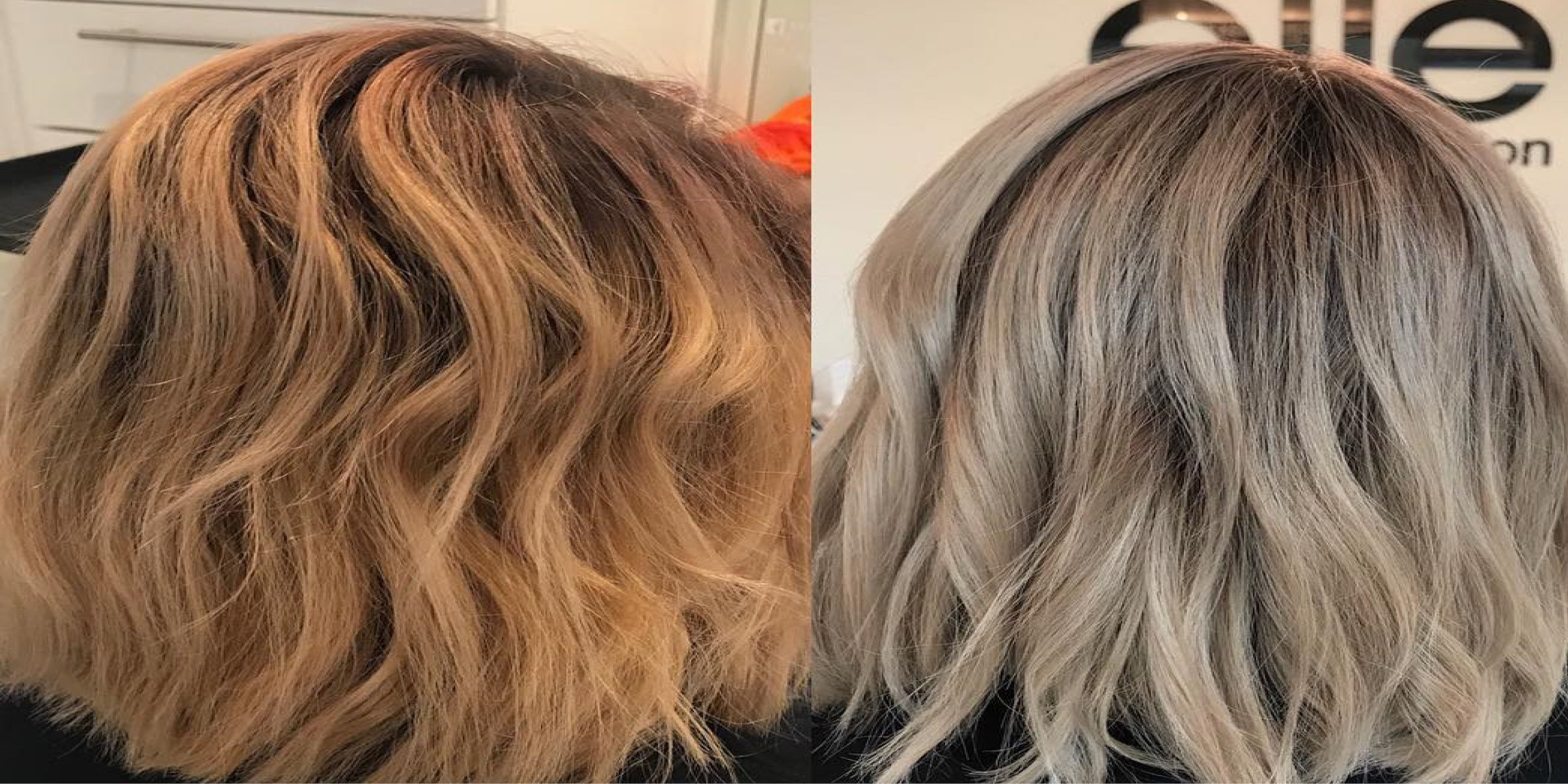
Step-by-Step Color Correction Process
Protecting the Skin and Clothing
Before starting the color correction process, it is essential to protect your skin and clothing. Apply a barrier cream or petroleum jelly along the hairline, ears, and neck to prevent the dye from staining your skin. Wear an old shirt or use a hairdressing cape to protect your clothing from any accidental spills or drips.
Mixing the Corrective Color Formula
Follow the instructions provided with the corrective color product and mix the formula accordingly. Ensure that you measure the dye and developer accurately to achieve the desired color and avoid any potential color discrepancies. Use a non-metallic bowl and a tint brush or applicator bottle to mix the color thoroughly, ensuring there are no lumps or inconsistencies.
Applying the Color to Specific Sections
Section your hair using hair clips and start applying the corrective color to the specific sections that require attention. Begin with the areas that need the most correction, ensuring that the dye is applied evenly from roots to ends. Use a tint brush or applicator bottle to apply the color, making sure each strand is fully saturated. Take your time and work methodically through each section to achieve a consistent result.
Processing Time and Rinse
Once the corrective color has been applied, allow it to process for the recommended amount of time. This will vary depending on the specific product and desired outcome, so refer to the instructions provided. After the processing time, rinse your hair thoroughly with lukewarm water until the water runs clear. Apply a color-safe conditioner to restore hydration and smoothness to your hair, leaving it on for the recommended time before rinsing again.
Post-Color Care
Moisturizing and Conditioning
After color correction, it is crucial to prioritize moisturizing and conditioning your hair. Color treatments can be drying, so using a hydrating and nourishing conditioner regularly will help restore moisture and prevent further damage. Consider incorporating deep conditioning treatments and leave-in conditioners into your hair care routine to keep your hair healthy and vibrant.
Avoiding Heat Styling Tools
Excessive heat styling can cause damage to your hair, especially after a color correction process. To maintain the longevity of your corrected color and prevent further damage, minimize the use of heat styling tools such as flat irons and curling wands. When heat styling is necessary, always use a heat protectant spray to minimize damage and keep your hair looking its best.
Using Color-Safe Hair Products
To preserve the vibrancy and longevity of your color, it is essential to use hair products specifically formulated for color-treated hair. These products are designed to be gentle and non-stripping, helping to maintain the integrity of your newly corrected color. Look for shampoos, conditioners, and styling products labeled as “color-safe” or “color-treated” for the best results.
Scheduling Professional Maintenance
While it is possible to correct hair dye disasters at home, it is always a good idea to schedule regular professional maintenance appointments. Professional colorists have the expertise and knowledge to address any complex or challenging color issues and ensure the long-term health and vibrancy of your hair. They can also provide personalized recommendations and advice based on your unique hair needs and desired outcome.
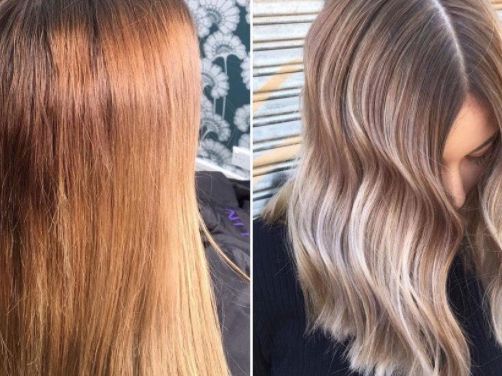
When to Seek Professional Help
Extensive Damage or Breakage
If you experience extensive damage or breakage during the hair dye disaster correction process, it may be time to seek professional help. A professional colorist can assess the condition of your hair and provide appropriate treatment options to repair and restore its health.
Incorrect Color Choice
If you have chosen the wrong color or are unhappy with your DIY color correction results, consulting a professional colorist is advisable. They can help you choose the correct color to achieve your desired outcome, and they have the expertise to correct any existing color issues.
Inexperience or Uncertainty
If you are inexperienced with hair dyeing or unsure how to proceed with color correction, seeking professional help is a wise decision. A professional colorist can guide you through the process, recommend suitable techniques, and ensure the best possible result.
Previous Color Corrections
If you have previously undergone multiple color corrections or have a history of challenging color issues, it is highly recommended to consult with a professional colorist. They will have the knowledge and expertise to assess your hair and provide the best course of action to achieve your desired color without further damage.
In conclusion, hair dye disasters can happen to anyone, but with the right knowledge and techniques, they can be corrected at home. By understanding the reasons for hair dye disasters, evaluating the damage, preparing for the correction, and following the step-by-step color correction process, you can achieve the desired outcome and restore the health and beauty of your hair. Remember to take good care of your hair post-color correction and seek professional help when necessary for the best results.
Going Dark: Tips And Tricks For Dyeing Hair Darker Shades(Opens in a new browser tab)
La Roche-Posay Effaclar Duo+ Unifiant teinte, Medium, 40ml review(Opens in a new browser tab)
ETUDE Fixing Tint #05 Midnight Mauve Review(Opens in a new browser tab)

